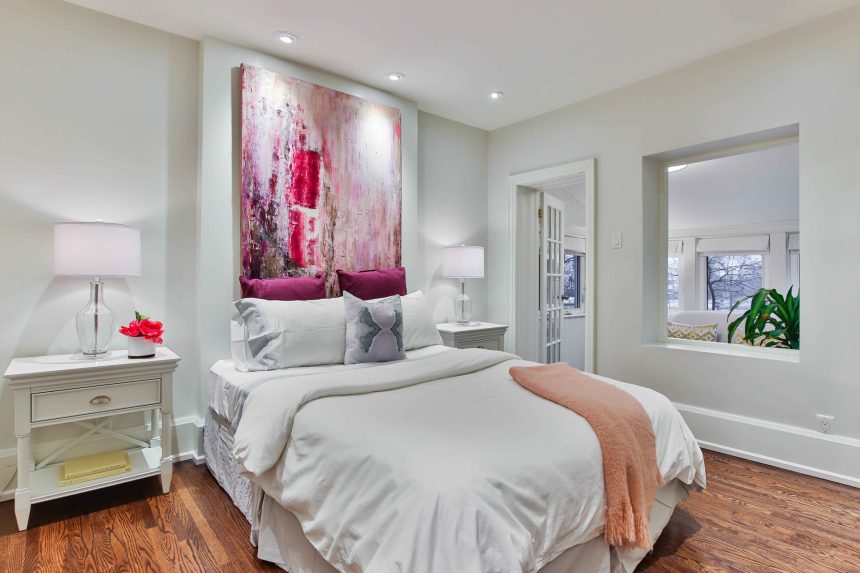If you’re tired of your living room looking like an Ikea showroom, it might be time to mix and match your furniture styles. I know what you’re thinking: “But won’t that look messy?” Well, yes and no. When done right, it can be a great way to give your space unexpected personality without breaking the bank. But there are some rules that have to be followed when mixing and matching furniture pieces. Whether you’re looking for inspiration or just want some tips on how best to pull off this look in real life—these are the five things I’ve learned along the way (after years of trial-and-error).
Use Less Color
The first step to achieving a cohesive look is to use less color. Instead of using a wild, bold palette that clashes with your furniture, use one or two colors at most–and even then, stick with neutrals like black or white.
For example: If you have an antique dresser and chair in your bedroom, paint the walls a muted shade of pink and accent them with light blue throw pillows on the bed. Or if you have a midcentury-inspired coffee table in the living room but want something more modern for seating area (and perhaps even some art), consider painting those walls greyish blue instead of stark white so they don’t detract from the rest of your decorating scheme!
Consider Your Furniture’s Purpose
When it comes to buying furniture, it’s important to think about the purpose of each piece. Look for furniture that can be used in multiple rooms and by multiple people.
For example, if you have a dining room table with chairs but no other seating in the house then consider investing in some chairs that can also be used as accent pieces or extra seating when needed during parties or holiday gatherings.
Consider multifunctional pieces such as ottomans that double as storage space or coffee tables with storage drawers underneath them when they’re not being used as TV trays on game nights! This will save space while still giving you the option of having extra storage if needed (and let’s face it…we all need more storage).
Think about what kind of activities are going on in each room before purchasing new furniture for those spaces so that everyone has something fun to do without having too much clutter taking up all their favorite spots!
Hog the Center of the Room
For the most part, you should avoid putting furniture in the center of your room. The exception to this is if you want to make a statement with an expensive piece that’s sure to be noticed. If you want to make sure everyone knows how much money they’re missing out on when they don’t buy your furniture, then go for it! But remember: You can always try mixing up styles later on if it doesn’t work out for whatever reason (we’ll talk about this more later).
Choose Your Colors Carefully
Choose a dominant color and use it throughout your room. This can be the main color of your sofa or rug, for example, but don’t stop there–it should also be present in accessories like pillows and decorative items like vases or art pieces.
Use a neutral color for the rest of the room. It doesn’t have to be white; neutrals such as gray, taupe and brown are just as effective at creating cohesion as lighter shades like cream or pastel pink (and they’re easier on the wallet).
Use a contrasting accent color on one piece of furniture only: either an armchair or ottoman that sits next to your sofa would work well here since it won’t clash with anything else in this section of your home (and if you really want something bolder than what we’ve suggested so far but still want to maintain some semblance of cohesion between pieces then look no further than these!)
Mix and Match bedroom furniture What You Can
One of the best ways to mix and match furniture styles is to pick one that you like and then go from there. If you have a rustic dining room, for example, but want to add some elegance with some French style chairs for your living room, don’t be afraid of mixing those two styles together!
You can also mix and match different colors or materials within the same room. For example, if you’ve got an oak table in your dining room but want something more modern for your kitchen countertops, simply use granite instead of wood (or vice versa). Or maybe you want darker wood floors throughout the house but lighter colored walls; no problem! Simply paint over your current wall color with something brighter than what was already there before moving onto another project altogether–like adding new artwork!
You can mix and match bedroom furniture styles if you follow a few rules
Mixing and matching furniture styles can be a great way to make your home feel more cohesive. But it’s important not to get too carried away with the idea–after all, you don’t want your living room to look like a hodgepodge of mismatched pieces.
Conclusion
You can mix and match bedroom furniture styles if you follow a few rules. The first rule is to use less color. Don’t go crazy with your choice of color and try to stick with one or two colors at most. This will make it easier to pair different pieces together. The second rule is considering your furniture’s purpose; for example, if it’s going in a kid’s room then maybe some colorful pieces would work better than others! Lastly, choose carefully when deciding on what pieces will go together because sometimes mixing styles just won’t work out perfectly despite our best efforts but hopefully these tips helped guide you along the way!





